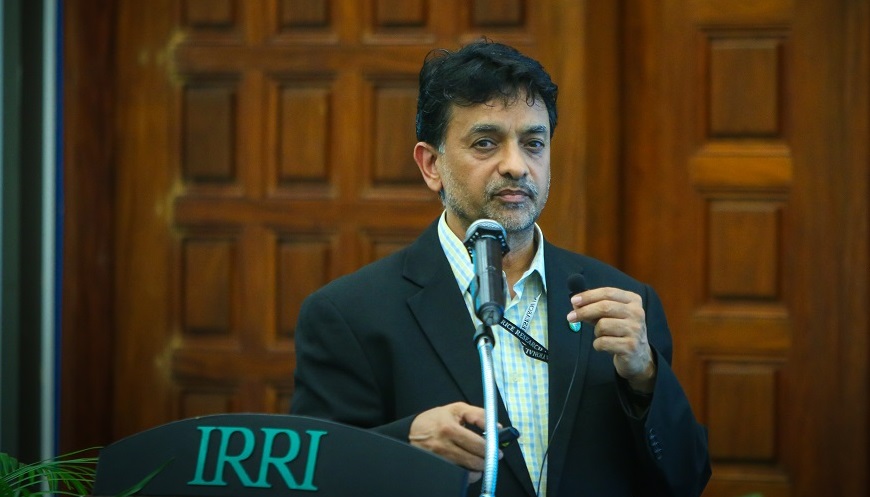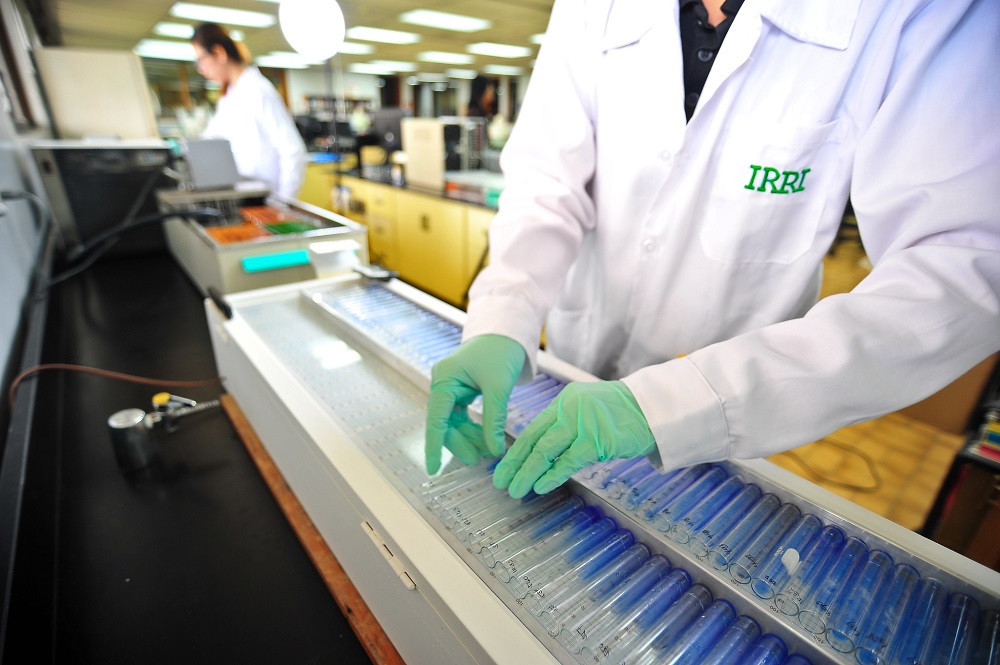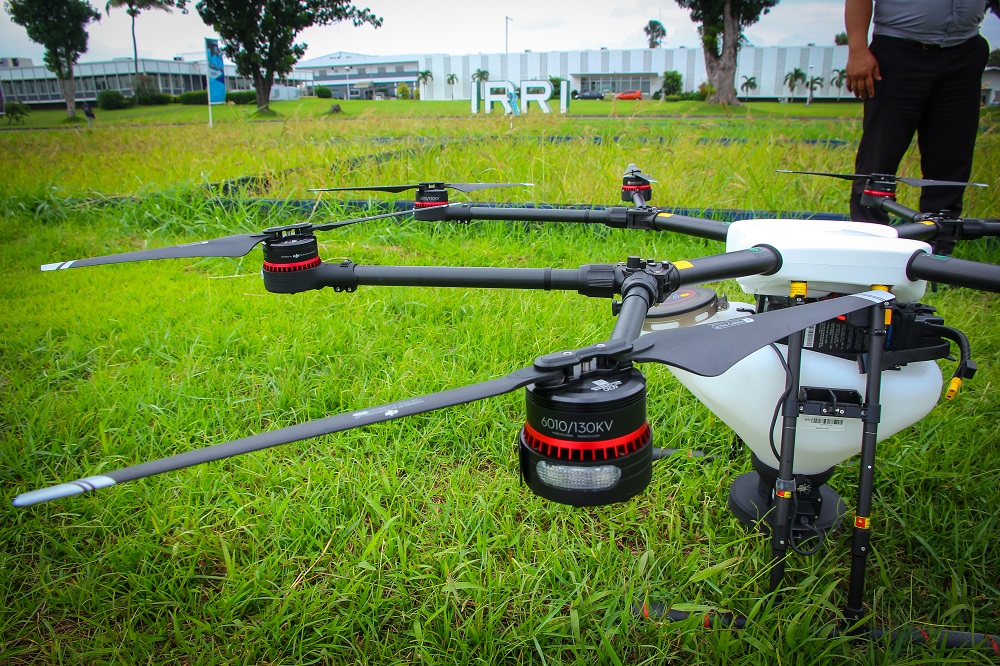We generate some very useful data and we let that data go to waste by 1) not being very innovative in our data interpretations, 2) not letting that data talk to us, and 3) not getting more out of the data. This is where we should be innovative in our data interpretations and go to a more holistic solution rather than a linear solution. This can lead to much better impact and transformation.
Ajay Kohli
Lead, Strategic Innovation Platform
Ajay Kohli, who comes from a family of Indian classical musicians, leads a different kind of orchestra at the International Rice Research Institute (IRRI). As the head of the Strategic Innovation Platform, Dr. Kohli supervises a team of 15 international scientists and almost 100 staff members primarily in the application of fundamental sciences such as genomics, genetics, and informatics instruments. His platform identifies genes and provides genetic materials and associated information that enables the institute’s rice breeders and physiologists to harness upstream research into translational research, through a highly interdisciplinary approach.
Dr. Kohli also leads IRRI’s Plant Molecular Biology Group for the past 10 years. During this time, the group has gained recognition in gene discovery and characterization in environmental stress tolerance of rice, particularly in improving yield under drought condition. He also worked at the Institute for Research on Environment and Sustainability at Newcastle University.
What is strategic innovation? In his presentation to IRRI’s Board of Trustees in April 2019, Dr. Kohli defined “strategic” as “advantageous in competition” and “innovation” as “something that avoids competition by novelty.”
“It might seem paradoxical but when you put the two words together they stand for research for advantageous novelty,” he said. “The philosophy we try to work with is we should use innovation in our strengths, continue to use our strengths, and have strength in our innovations. This should be a feedback loop.”
Dr. Kohli also highlighted the progress, achievements, and the future plans of the platform.
Come up with more ideas, get better ideas and be more innovative
When it comes to implementation we have a stage-gate process. The Strategic Innovation Platform would come up with a number of ideas. But those ideas have to have clear applications. There is the opinion that if you filter out ideas that do not have a very clear downstream application, you’re actually limiting the creativity and innovation within the organization. I think we might be increasing creativity and innovation because if you come up with an idea and be told that it doesn’t seem to have a very clear application to a downstream process or a product, you’ll be forced to come up with another idea. So you would probably come up with more ideas, get better ideas, and be more innovative.
We should be innovative in our data interpretations and go to a more holistic solution
My issue in the area of innovation has been that we generate some very useful data and we let that data go to waste by 1) not being very innovative in our data interpretations, 2) not letting that data talk to us, and 3) not getting more out of the data.
This is where we should be innovative in our data interpretations and go to a more holistic solution rather than a linear solution that was probably targeted from the very beginning. This can lead to much better impact and transformation. For this, we need a culture change. Essentially it means we have to avoid going through a linear path to perhaps a more complicated path in interpreting our data and getting to a better solution.
We are in a position to network with the people who can help us use new technologies better for our mandates
When biotechnology started at IRRI sometime in the early 1990s, we had a one-stop set-up for DNA marker services. Every expert and equipment necessary to generate the required data were available in one room.
In the late 1990s, we shifted to high-throughput technologies and we needed to outsource materials and get in touch with people who were better at using high-throughput technologies. When those changes started happening, there was an eternal catch-up game in these rapidly evolving high-throughput technologies. A few groups were able to catch up with the technology because they were perhaps linked to the right people in the right universities at the right places.
But that created some silos—perhaps rather successful silos—that became more reinforced. These are the aspects we want to avoid because the technology is still evolving at a very rapid pace and we cannot seem to keep up. The CRISPR CAS system, for example, has four to five different methods that have been coming up. We are not in a position, quite by choice as guided by our mandates, to invent new routes but we are in a strong position to network with the people who can help us use those technologies.
Our process now builds on having very cohesive groups. For example, within the Strategic Innovation Platform, we have four groups working on nutrition. All those four groups should be closely working together and talking to each other. We are trying to have very cohesive groups in what we do. Nutrition is one example. Genome editing is another example.
We need more knowledge-intensive research outputs and not just prove that we can use a technology.
The other thing is we should have a passion for tools which means knowing how to best use them. Drones are coming up in a big way. All kinds of genomic sequences and omics technologies are coming up in a big way. But you cannot have something like “I really like this, I want to be involved in this, and I want to have the next paper to prove that I can do it” unless you have a clear case of actually being able to work it towards a product or a process. We need more knowledge-intensive research outputs rather than just proving the point that we can use a technology.
We need to have a mechanistic understanding with a direct application. This is where we are differentiated from the university departments that conduct innovative upstream research. We need to do basic research. We need to understand genetics and genetic mechanisms but with a view on applications. Projects that allow us to do both are the projects we want to undertake.
What is on the horizon for traits, technology, and resources
We’ve all been very excited about grain-quality, which includes Golden Rice, high-zinc, and high-iron rice. It also includes the low-glycemic index (GI) rice.
We are doing very well with low-GI rice. We’ve identified IR36 mutant with low-GI, high-resistant starch, and high protein. We have three varieties which are high in amylose content and low GI. These are the ones we are developing for the next phase of getting to the product.
We now have a new gene for epigenetics. We have a new gene for fertility. We have to characterize them much better and see how we can take them all the way to the product.
The high-outcrossing rate was high on the agenda sometime back. It took a backseat because there was a bit of a difficulty reconciling some of the results. It is back on track now and we are expecting very good genes. The mechanistic understanding of the high-out crossing will attract a lot of attention from the private sector.
The Crop Trust Fund has awarded USD 1.4 million per year grant in perpetuity to the International Rice Genebank because it is the best they had ever seen. The operation of the gene bank is the best within the system and they want to keep it that way and that is why we have been selected to have that grant.








